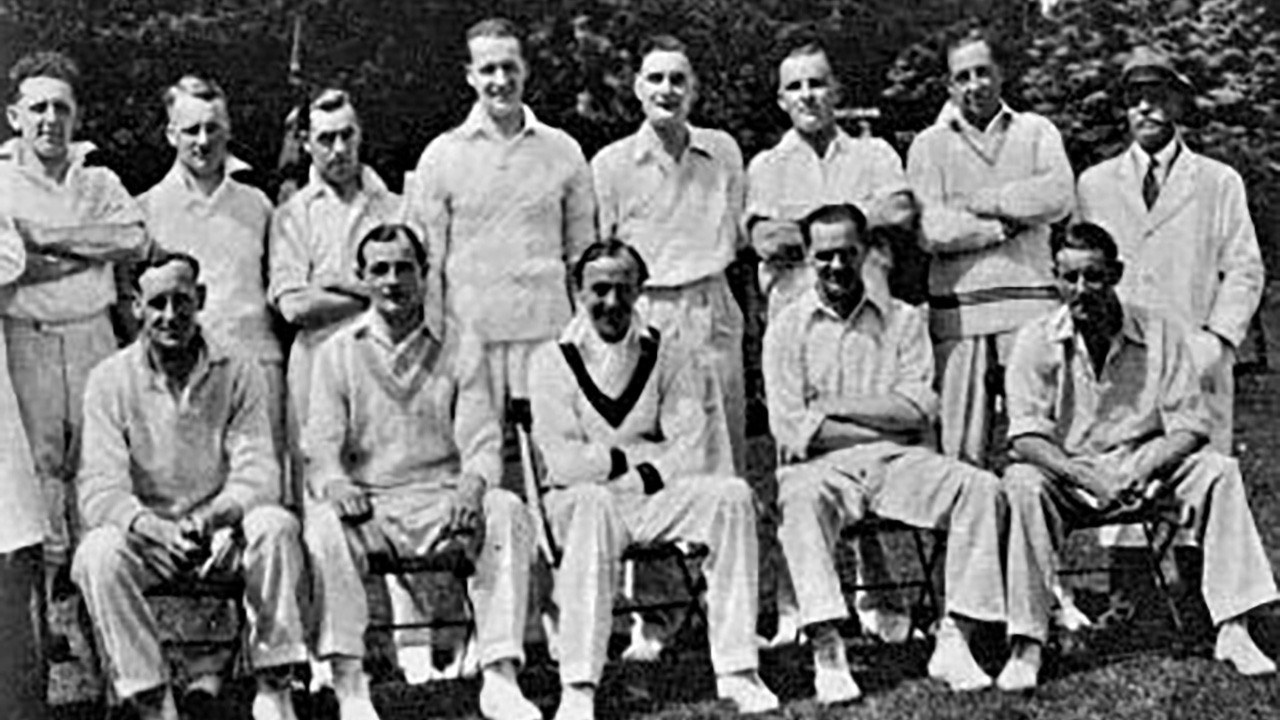As the nation looked forward to celebrating the end of the war in Europe 75 years ago, so Northamptonshire cricket supporters were anticipating a summer of friendly combat on the field.
‘Prospect of Bright Cricket Season’ proclaimed the Northampton Mercury newspaper on May 4, 1945 – reporting on the club’s Annual Meeting a couple of days earlier, which had noted the deaths in action of former players Michael Cassy and Sidney Adams in the previous year. Although no competitive games were played in wartime Northamptonshire (relatively unscathed by enemy bombing) proved one of the most energetic cricketing counties in England, generally using the attractive Spinney Hill ground in Northampton – belonging then to the Northampton Brewery Company and home of the Vallence club in the County League until the 1970s but now, sadly, buried under housing – with the County Ground unavailable after its buildings were requisitioned by the National Fire Service.
Much of the credit for the County’s activity and prominence during the Second World War belonged to Peter Murray-Willis, who made his debut for the club in 1938 under the captaincy of his friend Robert Nelson (killed in an air raid on the Royal Marine barracks at Deal in 1940) and both led the side and arranged many of the fixtures during those grim years. Northamptonshire even played matches in the London area as early as 1943, the first ‘provincial’ county to do so.
In April 1945, with thoughts starting to turn to how the post-war sporting landscape might look, the club asked members to support a fundraising effort with £5,000 the initial target. Those who turned up at the AGM heard a rosy report about the summer ahead; an ambitious programme of 14 matches with a long list of potential players, old and new, containing ‘enough first-class talent to make the side very strong if they are all available together – but, of course, this is not possible in wartime.’
The season was scheduled to begin on May 12 against the RAF at Spinney Hill. By then, of course, VE Day (May 8) had been and gone – but not before Miss Hewitt, a member of the Daventry District Rural Council, had spoken out sternly against too much ‘jollificating’ with so many British service personnel still in captivity, principally in the Far East where the war against Japan continued.
The air force fielded a formidable side at Northampton – led by former England captain Bob Wyatt and boasting the likes of Bill Edrich, Don Kenyon, Bernie Constable and future Test umpires Syd Buller and Arthur Jepson. Northamptonshire had pre-war stalwarts Dennis Brookes, Jack Timms, Reg Partridge and Arthur Cox in the team, as well as Cambridge blue Jack Webster (who would succeed Murray-Willis as captain midway through the following season) and former New Zealand Test bowler Ted Badcock. Because no fewer than 14 players were available, Murray-Willis – ever unselfish – stood down himself, although he still appeared on the team photo.
On that Saturday morning Kenyon fell cheaply to Webster and Badcock removed Edrich for 28, but a third-wicket stand of 192 between Wyatt and Percy MacKenzie – a pre-war Hampshire amateur awarded the DFC in 1942 – boosted the RAF to 262-3 declared. Wyatt made 92 and MacKenzie an unbeaten 103. Northamptonshire’s reply then got off to a dreadful start with Brookes, Timms, Cox and Maurice Crouch all back in the pavilion for just 26, Nottinghamshire fast bowler Jepson accounting for three of them. With no chance of overhauling the visitors’ total it was left to Webster and Partridge to dig in and play for a draw, the County closing a long way short on 122-5.
There were some better performances later in the season, including an excellent 24-run victory over Lindsay Hassett’s Australian Services side – who drew the series of ‘Victory Tests’ with England – in August, and a five-wicket win over Surrey at a ‘mini-festival’ in Hastings a month later. They also had the better of a rain-affected draw against the strong New Zealand Services XI (including pre-war County wicketkeeper Ken James) at the North Park ground in Kettering on Sunday August 5. The following day saw the dawn of the nuclear age with the dropping of the atomic bomb on the Japanese city of Hiroshima.
By the end of the year Northamptonshire’s ‘Reconstruction Committee’ under the chairmanship of ‘Tubby’ Vials had made key preparations for the resumption of Championship cricket in 1946 – heading off a tentative move by Yorkshire to snaffle Dennis Brookes, appointing Lieutenant-Colonel Alleyne St George Coldwell as secretary (at £400 per year) and getting the County Ground’s pavilion derequisitioned. The task of repairing the building after nearly six years of fairly rough treatment from the firemen was begun; the committee even ordered some new gas fires. And, in a radical move, the press were admitted to most of their meetings. Such was the public appetite for cricket that a quiz between five Northamptonshire players (Murray-Willis, Brookes, ‘Nobby’ Clark, Webster and John Oliver) and five of their Leicestershire counterparts was broadcast, the questions set by Wally Hammond.
In October it was agreed that Murray-Willis, who had done such sterling work on the club’s behalf during the war, should captain the side in the first summer of peace. A notable dissenter from that decision was Captain ‘Bertie’ Bolton, a former first-class cricketer with Hampshire and Northamptonshire’s Chief Constable for nearly two decades. Within a year he would be agitating (successfully) to have him replaced.
But for the time being positivity and optimism were the watchwords. Miss Hewitt may have disapproved of too much ‘jollificating’ – but Northamptonshire cricket had plenty to look forward to.

